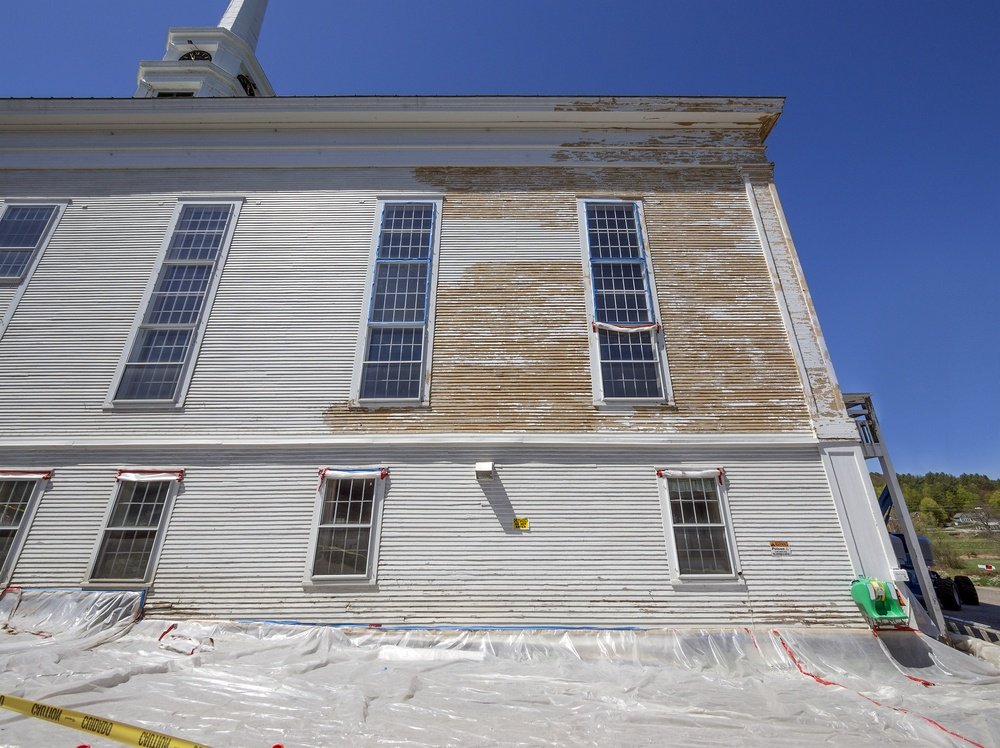Should You Invest In Lead Paint Removal? Budgeting & Safety Tips!
Lead is a metal that was used for almost everything at one time. It was in gasoline, in plumbing pipes, and even on our dishes. Most significantly, it has been used in paint pigment for hundreds of years, almost all of the celebrated paintings of the Renaissance masters, for example, contain lead-based pigments. Lead continued to be used until the 1970s, and almost every home built before 1950 was painted with lead-based paint.
However, eventually it was discovered that lead is toxic to humans, especially young children, and its use was phased out. In 1971 it was banned in gasoline in the US (in the UK it wasn’t until 2000) and in 1978 it was banned in paint. This has led to a lot of people remediating their homes in one way or another, but not all homes have been treated, especially antique or historic homes.
What should you do if you suspect there is lead in your dwelling or potential purchase?
Test for Lead
If your home or apartment was built before 1978, you definitely want to test for lead. This is especially important if there are areas where paint is chipping or flaking, or if you have children under 6, elderly people, or people with breathing difficulties such as asthma living with you. The urgency to remove or remediate lead is not as high for healthy adults, but it is still a good idea anyway. You can do this by hiring a professional or purchasing a test kit from a hardware store. If it is established that there is lead paint in the house, you have several options to remove it, all with their own pros and cons.
Lead Paint Removal & Replacement
The most efficient way to get rid of the effects of lead paint for good is to remove and replace it. This can be costly, but it covers all the bases. You can hire professionals, or you can do it yourself. If you choose to do it yourself, the most important thing is to follow safety precautions as you would for dust or asbestos. Wear protective clothing and headgear to keep from inhaling paint chips and seal the room so no particles escape from windows and doorways or through vents. Even removing the paint entirely can create hazards during the process and disposal because of the possibility of contamination of air, water, or soil.

Encapsulation
A less expensive way of remediating lead paint is encapsulation. There are paints available that trap the lead paint underneath, covering it completely and preventing the toxic particles and fumes from escaping. While this is less costly and much easier to do oneself, it also is not foolproof. Like all paint, encapsulation paint wears off with use, so heavily-trafficked areas, such as door and window frames, will need to be monitored and redone more frequently. However, for broad spaces, such as walls and ceilings, encapsulation is a very cost-effective way to remediate lead paint.
Enclosure
A third way to deal with lead paint is to enclose it other material, trapping the lead surfaces behind other surfaces. This keeps any flakes or particles from being released into the air, and is ideal for antique and historic homes since it preserves the original structure. However, as with encapsulation, high traffic areas of the home will have to be treated either more frequently or another way. This is a little more expensive than encapsulation but is worth the extra cost in certain situations.
Tips & Tricks
Whether you choose to do it yourself or hire a professional, there are a lot of things to keep in mind when it comes to lead paint in your home.
- Lead paint is more likely to be found in older homes, but the likelihood of a home built between 1950 and 1978 having lead paint is higher in urban areas. This is especially true on the Eastern seaboard cities such as New York and Baltimore, or industrial cities like Cleveland or Milwaukee.
- If you are on a limited budget, you should prioritize any childrens’ rooms. Children, especially those under the age of 6, are particularly susceptible to lead poisoning, and the effects are irreversible.
- Use a combination of all three methods discussed above. This is the least expensive and safest way to go about lead paint remediation. Remove paint from high traffic areas, and encapsulate or enclose it in broader spaces. You can always change your mind and encapsulate an area you enclosed or vice versa.
- No matter what method you choose, you should keep the room moist to collect any dust particles that may become airborne during the remediation. These could bear some of the very lead you are trying to contain, which can be breathed in or find its way into the water or soil. Dust sticks to moisture, clumps up, and is easier to clean. This is an important precaution if you are removing the paint, but is a good tip to follow when dealing with any lead paint.
Lead poisoning is a major health hazard that cannot be reversed. Avoiding it means avoiding a lifetime of health problems that could be fatal, especially for vulnerable populations. Being smart and following the above techniques will help keep your remediation efforts both safe and budget-friendly!


